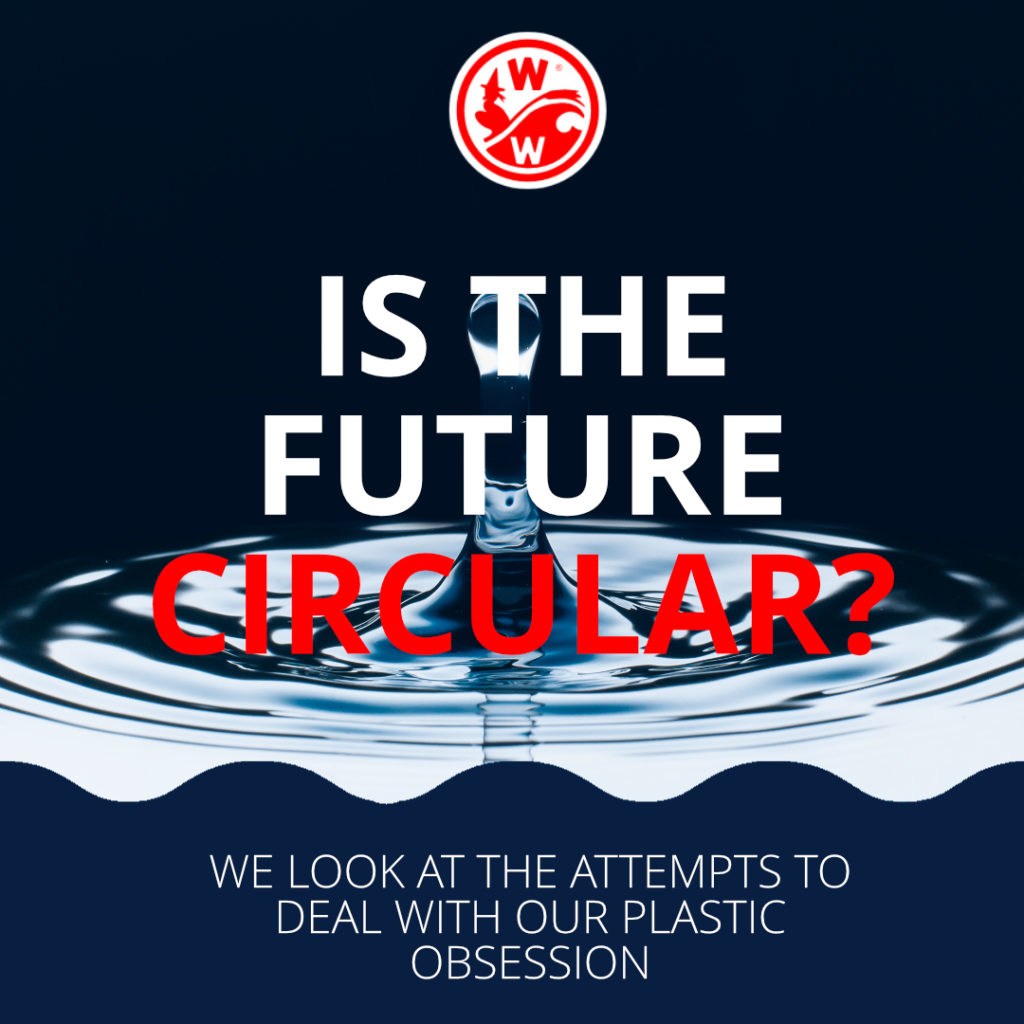Is the future circular? We look at the attempts to deal with our plastic obsession

There are over 165 million tonnes of plastic in our oceans and another 9 million tonnes entering each year. Are there any realistic solutions to stop it?
Single-use plastics are filling up our landfills, choking our rivers, and contaminating our oceans.
Mainstream media and social media are awash with depressing images of seahorses clinging on to cotton buds and turtles ensnared in plastic bags.
The Ellen MacArthur Foundation discovered that 95% of all plastic packaging is single-use – with only 5% of it actually recycled. With the production of plastic increasing and waste growing – they concluded that by 2050 the ocean would have more plastic than fish.
Now, while public sentiment is firmly on side of reducing our plastic pollution – will it be enough to stop the flow?
What attempts have already been made to deal with our plastic obsession?
Recycling
Recycling promised to take all our conveniently wrapped foods and water bottles and turn them back into useful consumer products. However, the majority, we now find has been burnt or sent to the third world. And it turns out most of the black plastics we have been putting into our recycling bins for decades – has never been recyclable.
In 2016, China was importing 7.3m tons of waste plastics from around the world. The Chinese government called a halt to this and now the majority of our waste is now going straight into landfill in countries like Vietnam, Thailand and Malaysia – the three countries with the worst record of plastic ocean pollution.
We are at a recycling crisis point and lack the necessary recycling infrastructure to deal with our own waste.
Zero waste movement
The zero-waste movement held more promise. It promotes a covetable lifestyle filled with beautiful reusable glass bottles, fabric bags and stainless steel straws. But critics say that producing these alternatives impacts the environment just as much as plastic production. Replacing cheap plastics with much more expensive glass and steel solutions is also prohibitively expensive for the vast majority of the population.
Biodegradable bio-plastics
Corn starch or sugar-based PLA (polylactic acid) and PHA (polyhydroxyalkanoate) bioplastics have also been touted as a potential solution. However, they still involve the use of fossil fuels and various chemicals to grow and process the plants. Plus, once they are thrown away – if they don’t have adequate oxygen, they won’t decompose either.
“It is important that any claims made for these products are really clear, so people won’t be throwing things on the street because they think it will degrade, it won’t” Rob Opsomer from the Ellen MacArthur Foundation.
Banning single-use plastic
The European Parliament also voted to ban single-use plastics – with a complete ban on cutlery, plates, cotton buds, drink stirrers, straws and balloon sticks by 2021 across the European bloc.
While laudable, the actual implementation and enforcement of this ban seems a colossal task. There needs to be a complete sea-change within the manufacturing industry.
But this too seems to be achievable. In October 2018, some of the world’s largest packaging producers and brands, like Cocoa-Cola, L’Oreal, Danone and Unilever signed the New Plastics
[1] Sandra Laville, “It’s shocking, it’s horrendous’: Ellen MacArthur’s fight against plastic”, The Guardian, 30 December 2017, <https://www.theguardian.com/environment/2017/dec/30/ellen-macarthur-its-shocking-its-horrendous-fight-against-plastic> [Accessed: 4 March 2019].
[2]Renee Cho, “Truth about Bioplastics”, Earth Institute, Phys.org, 14 December 2017, <https://phys.org/news/2017-12-truth-bioplastics.html> [Accessed online, 4 March 2019].
[3] Olivia Boyd, “The plastics problem, are natural alternatives doing more harm than good?”, The Guardian, 31 October 2017, <https://www.theguardian.com/business-to-business/2017/oct/31/the-plastics-problem-are-natural-alternatives-doing-more-harm-than-good> [Accessed online, 4 March 2019].
[4] European Commission “A European Strategy for Plastics in a Circular Economy”, <http://ec.europa.eu/environment/circular-economy/pdf/plastics-strategy-brochure.pdf> [Accessed 4 March 2019]
